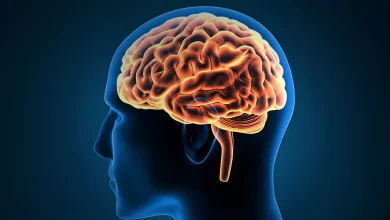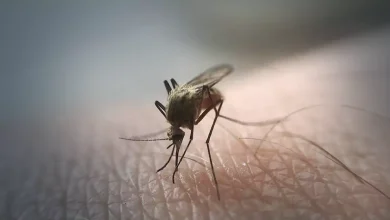All about Ectropion
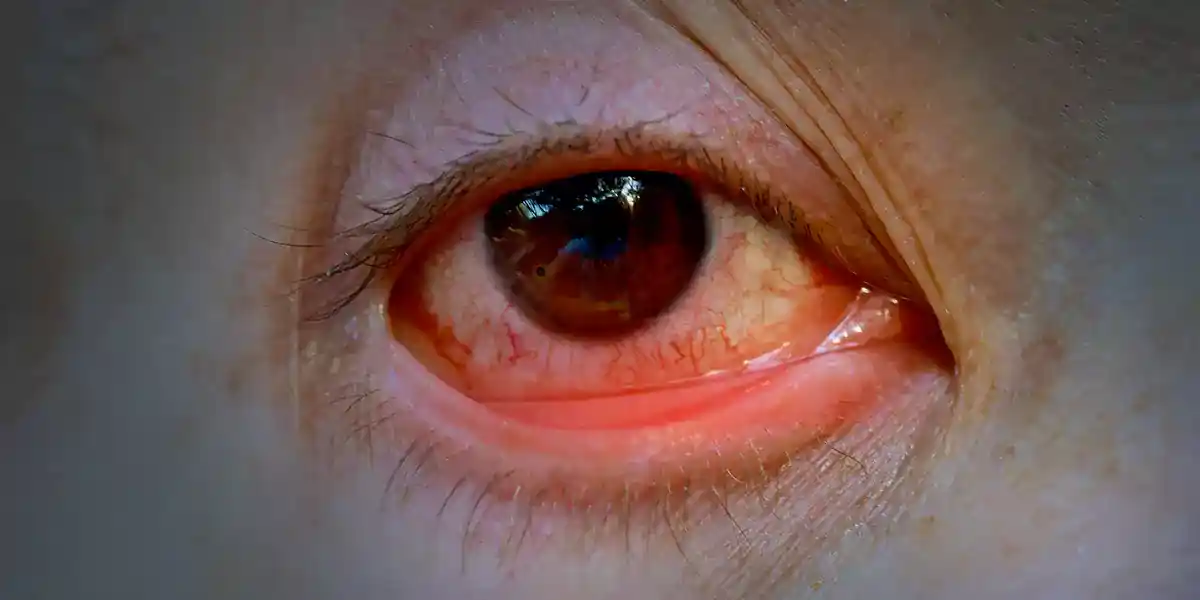
What is Ectropion?
Ectropion occurs when your eyelid turns outward and leaves the inner eyelid surface of your eyelid prone and exposed to irritation. Ectropion is usually more common in older adults, and only the lower eyelid is typically affected by it. In the cases of severe ectropion, the entire length of the eyelid is turned out while in less severe ectropion, only one segment of the eyelid gets sagged away from the eye. If you have symptoms of ectropion, you should go for immediate medical attention. If left untreated, ectropion can cause severe problems with your cornea, which can even lead to blindness. Eye lubricants are helpful to manage symptoms, but surgery is generally needed to treat it completely. Most people who go through surgery experience a positive result.
What are the Types of Ectropion?
The types of ectropion include:
Involutional ectropion: It is the most common type of ectropion and is connected with frequent eye rubbing, but it’s most usually linked to ageing eyelids. The eyelids become loose due to muscles and ligaments getting looser.
Paralytic ectropion: It occurs along with facial nerve palsy, such as Bell’s palsy which comes on quickly. It generally leads to drooping of one side of your face. A stroke might also lead to cranial nerve paralysis.
Cicatricial ectropion: This type of ectropion might occur because of scars and excessive and frequent sun exposure. You might get this type of ectropion if you’ve already had blepharoplasty (eyelid surgery) or any other form of eye injury.
Mechanical ectropion: This type of eyelid ectropion occurs when your lower eyelid is pulled away from the eye because of any type of heavy weight which can be a tumour, a mass of fat, or edema.
Congenital ectropion: This type of ectropion is the rare type with which you’re born. Down syndrome and blepharophimosis syndrome are two congenital conditions that might cause this type of ectropion.
What are the Symptoms of Ectropion?
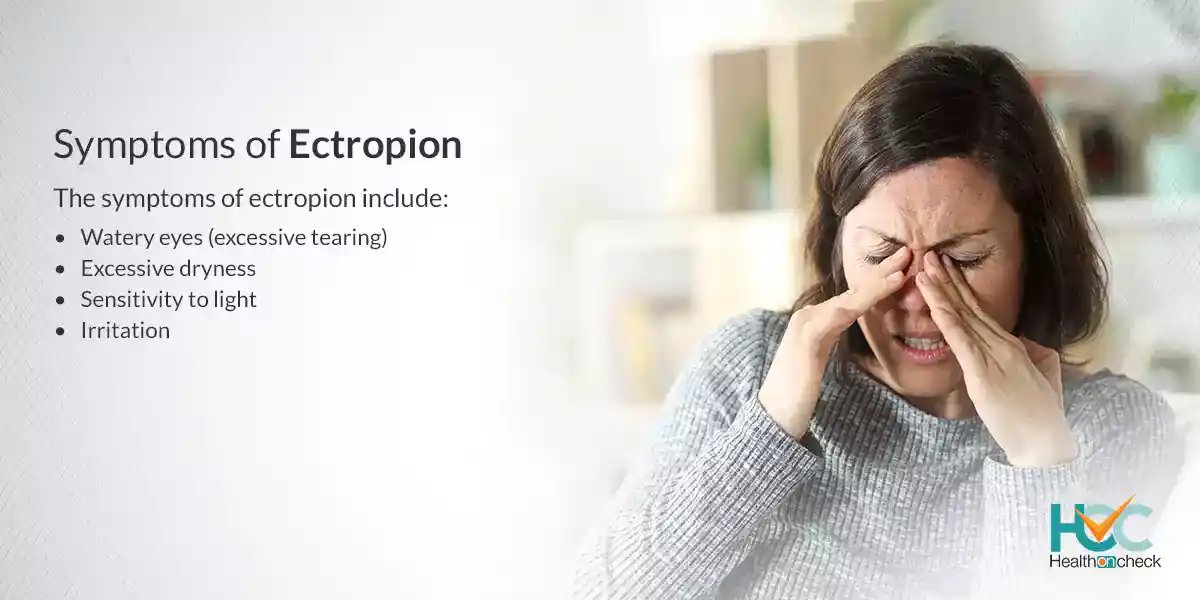
The symptoms of ectropion include:
Watery eyes (excessive tearing): When there is no proper drainage, your tears might pool and frequently flow over your eyelids.
Excessive dryness: Ectropion may lead your eyes to feel sandy, dry, and gritty.
Irritation: Stagnant tears or dryness may irritate your eyes, resulting in a burning sensation and redness in your eyelids and the whites of your eyes.
Sensitivity to light: Stagnant tears or dry eyes might irritate the surface of the cornea, which makes you sensitive to light.
What are the Causes of Ectropion?
The causes of ectropion include:
Muscle weakness: With age, the muscles under your eyes tend to start getting weak, and tendons stretch out which hold your eyelid taut against your eye. When they become weak, your eyelids might start to droop.
Facial paralysis: Some specific including Bell’s palsy, and specific forms of tumours might paralyse facial nerves and muscles. Facial paralysis affecting eyelid muscles can cause ectropion.
Scars or previous surgeries: If your skin is damaged due to burns or trauma, like a dog bite, it may affect the way that your eyelid rests against your eye. Any earlier eyelid surgery (blepharoplasty) might result in ectropion, especially if a considerable amount of skin was removed from the eyelid during the time of surgery.
Eyelid growths: Benign or cancerous growths on your eyelid might lead to the lid turning outward and cause ectropion.
Genetic disorders: In some rare cases, ectropion can be present at birth (congenital) and is generally linked with genetic disorders, like Down syndrome.
What are the Risk Factors of Ectropion?
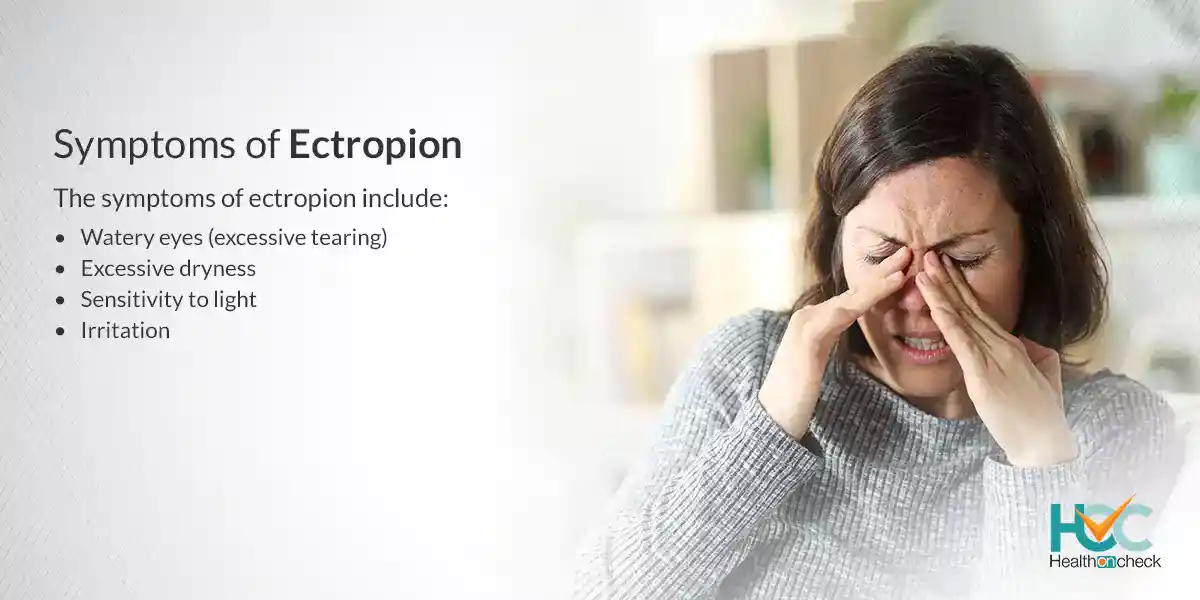
The risk factors of ectropion include:
Age: With passing age, the risk of developing ectropion increases.
Previous eye surgeries: If had a previous eye surgery then you have an increased risk of developing ectropion later.
Previous cancer, burns, or trauma: If you have skin cancer on your face, facial burns, or trauma, your risk of developing ectropion increases.
What are the Complications of Ectropion?
Long-term irritation, excessive dryness, and exposure of the cornea can cause infection of the eye or conjunctivitis. It can also cause infected pus or fluid around your eye and on your eyelashes, particularly after waking in the morning.
Other complications of ectropion might include:
- corneal abrasions where there are scratches on the cornea or surface of the eye.
- corneal ulcers (sores on the cornea or surface of the eye)
- Vision problems
- Permanent blindness
How Ectropion is Diagnosed?
Usually, ectropion can be diagnosed with a regular eye exam and physical test. Your doctor might pull on your eyelids during the exam or ask you to forcefully close your eyes which assists them in assessing muscle tone and tightness of each eye.
For instance, if your ectropion occurs because of a scar, tumour, previous surgery, or radiation, your doctor will also examine the surrounding tissue.
Understanding the reasons for ectropion is quite important to select the correct treatment or surgical technique.
What are the Treatment Options Available for Ectropion?
If your ectropion is mild, you might be prescribed artificial tears and ointments to ease the symptoms by your doctor. Usually, surgery is needed to cure ectropion completely.
Surgery
The type of surgery you have to undergo is based on the condition of the tissue surrounding your eyelid and on the cause of your ectropion:
Ectropion caused by muscle and ligament relaxation because of ageing: Here your doctor will get rid of a small part of your lower eyelid at the outer edge. The tendons and muscles of the lid will be tightened when the lid is stitched back together, which will make the lid properly rest on the eye. It is usually a relatively simple procedure.
Ectropion due to scar tissue from injury or previous surgery: Here your surgeon might have to use a skin graft, that is taken from your upper eyelid or behind your ear, for helping to support the lower lid. If you have facial paralysis or significant scarring, you may require a second procedure to correct your ectropion completely.
Before surgery, you will be given a local anaesthetic to numb your eyelid and the nearby area. You might be slightly sedated by using oral or intravenous medication to make you more comfortable, based on the form of procedure you have to go through and whether it’s performed in an outpatient surgical clinic.
After surgery, you will likely experience:
- Swelling for sometime
- Bruising near your eye
You might feel that your eyelid has become tight after surgery. But as you heal, you will start feeling more comfortable. Stitches are generally removed after a week of surgery and the swelling and bruising fade in about two weeks.
Living with Ectropion
Your eyes are quite vital to you and if you experience anything different about your eyes, or your eyesight, you should contact your doctor and discuss it. Something might not look important, like a small change in your eyelid where it’s turning inside out, but it can be something that might become a problem. Outward-facing eyelids (ectropion) might not feel significant, but the condition can be uncomfortable in the present and can harm your sight in the future if left untreated.
Whom to Consult?
You should go for regular eye care appointments. If you notice signs and symptoms that are causing swelling, redness, feeling like you have something in your eye, watery eyes, sensitivity to light, decreasing vision and a feeling like your eye isn’t able to close correctly, contact an eye specialist as soon as possible.

